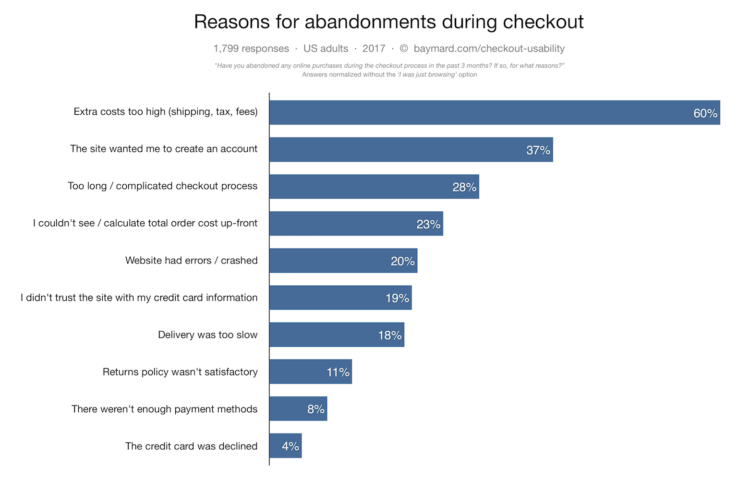KPIs for E-commerce – Key Performance Indicators for Online Stores. What’s Worth Measuring?

Every business strives to achieve its goals. Therefore, you should regularly monitor whether your objectives are met. If so, the enterprise is going in the right direction. The situation looks the same for the e-commerce industry. To measure the effectiveness of your actions, you need to determine KPIs, meaning key performance indicators. So what are KPIs for e-commerce?
Table of Contents:
KPI – what is it?
Key performance indicators are applicable in a variety of industries, or to be more precise, in almost every enterprise. They make it easier to monitor the progress of the company and check whether it reaches given objectives. A specific numerical value should be assigned to the indicator and it should refer to a particular time frame.
Each company should define its KPIs individually. These indicators may vary at different stages of operation. They’re particularly applicable in the e-commerce industry as their calculation and analysis of changes are crucial to determine whether the performed activities are likely to meet store owner’s expectations.
The basic KPI that’s applicable in every industry is a target number of new customers acquired over a specific time period. Aiming at reducing the number of complaints in relation to the number of products sold is another good objective. The value of revenue in a given period is also a common KPI. You can decide to improve the sales value by 30% or increase your conversion rate to a specific level in the upcoming year.
KPIs for E-commerce – Key Performance Indicators For an Online Store
Calculation of key performance indicators is important for every business, however, the potential is especially promising when it comes to e-commerce. With the use of various tools, you can analyze almost every element which affects your results and is related to your business. All of these thanks to alarm values informing that something disturbing is happening and immediate action is needed.
Actually, KPIs in e-commerce can concern a lot of issues related to:
- Shopping cart abandonment,
- Conversion,
- The effectiveness of marketing channels,
- Customer complaint ratio,
- The average order value per one customer,
- Bounce rate,
- Total revenue,
- Product return rate.
So, for example, your product return rate may be 15%, whereas the average value for the industry is 12%. In this situation, your KPI might be to achieve the typical result of your market rivals over a specific time period. Of course, it’s necessary to implement actions that will help you determine the cause of the situation and then decide what to do to implement changes.
Which e-commerce parameters should you measure at your store? Many of them are pretty flexible, it’s worth using them to see the real condition of your business, set objectives and start performing activities that will help you achieve desired results. Below you can see e-commerce KPI metrics you should take into account.
1. ROI
ROI stands for return on investment. With its use, you can calculate your return on investment of marketing activities.
The easiness of assessing the achieved results is the greatest advantage of online ads. You can check whether a given investment has brought you the expected profits. Let’s assume that you benefit from Google Ads. Check out the example suggested by Google.

It’s impossible to find marketing activities that ensure excellent results each time. By trial and error, you need to decide which investments have been the most beneficial for your enterprise. For some, these will be social media activities, for others, SEO, or email marketing. The time needed to see the return on investment also varies, depending on the activities.
In the case of SEO, ROI becomes visible after 9-10 months of on-site activities. Be patient and don’t stop performing SEO activities. They require constant work but the results are more long-lasting than other marketing solutions. ROI increases over time.
2. Bounce rate
When do you deal with bounce rate? If users visit your store but leave it after seeing the landing page or one subpage. Bounce rate can be calculated by dividing the number of web sessions during which users displayed only one subpage by the number of all website impressions. If the rate is high, it’s a sign that you need some changes. Entering only one subpage is almost never enough to finalize the transaction. Although it’s possible in some cases, you shouldn’t expect such purchases to constitute the majority.
Minimizing the bounce rate should be your objective. So, what’s the ideal result? In this case, less is more, however, 20-40% is a satisfactory score. Test and analyze to find out what’s the reason behind your high bounce rate. Maybe your website loading time is too long? Or maybe your page navigation is complex or the site search is located at the bottom of the website?
A high bounce rate can have a negative impact on your visibility in the organic search results.
3. Shopping cart abandonment rate
Shopping cart abandonment rate – you deal with the abandoned shopping cart when users put products into their carts but don’t finalize transactions. Your objective is to achieve the lowest possible value of this indicator which translates into improvements of other parameters such as sales or conversion rate.
In the screenshot below you can see the most important reasons for shopping cart abandonment. Check out what’s the problem in your case. Determine your bounce rate but remember that these elements are strongly affected by the industry you operate in. For example, clothing stores usually have much lower bounce rates than shops offering electronics and household appliances.

4. CLV/LTV
CLV/LTV stands for customer lifetime value (or lifetime value). It’s about calculating the income earned by each customer. Find out how much one customer will spend at your store for over 12 months. And why should you need this information? To calculate how much you can invest in one customer to make sure that it’s still profitable for you. So how to calculate CLV?
CLV = annual income earned on the customer x average number of years of the customer relationship – initial costs of acquiring the customer
5. Conversion rate
Conversion rate is another important indicator that can be calculated comparably effortlessly. Just divide the number of your online store orders by the total number of visits. Let’s assume that the website was visited by 1000 users, 50 of whom made a purchase. This means that the conversion rate is 5%.
This is affected by numerous factors. UX, appropriate product targeting, or product prices – all of these matters. Pay attention to every aspect of store management as even seemingly inconspicuous changes can help you improve your conversion rate. Making it possible for users to shop without setting up an account is a simple, yet effective modification.
In the screenshot below you can see the results of the survey conducted by Compass. Thanks to it, you can find out what’s the conversion rate depending on the type of marketing activities. However, it’s crucial to carry out similar analyses for your online store – different activities may turn out to be effective in different industries.
6. AOV
AOV stands for average order value. Your goal should be to maximally increase the revenue from one order. There are numerous ways to improve AOV. Offer free shipping, extra products for free, discounts for the next shopping, or installment payments.
7. Newsletter subscribers
A number of newsletter subscribers – a database of users are a valuable source of information. If it’s one of your e-commerce KPIs you may aim at increasing the number of subscribers by a certain percentage over a given time period. Offer discounts to customers who decide to subscribe to your newsletter.
KPIs for E-commerce. The takeaway
KPIs play a significant role in almost every industry. Thanks to key performance indicators, you can monitor your goals and check whether your store is developing as you would wish. Do you measure other KPIs at your store? Let us know in the comments below and write what results you’ve managed to achieve.






Nice insights, but it’s impossible to point out obligatory KPIs for e-commerce. It depends on so many factors that one really needs to crack his/her brain on the matter and choose metrics suitable for the business in question. Otherwise, it’s kind of pointless – always make sure your KPIs bring you the analytical value to what you want to evaluate!
I don’t agree – there are a couple of KPIs that are quite universal. For example, I highly doubt there’s e-commerce that doesn’t set the conversion rate of the website as a KPI metric.